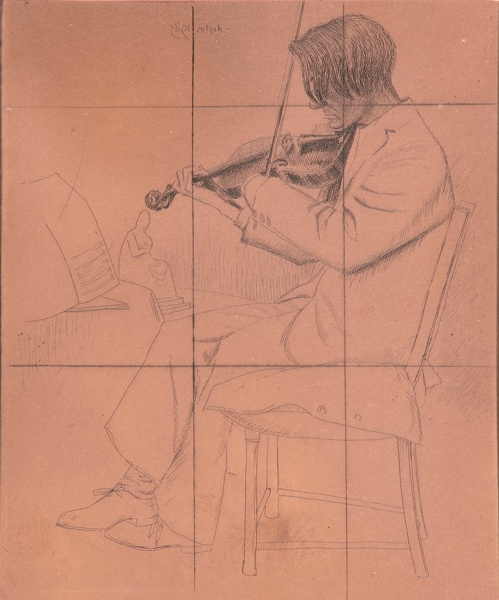

 Hover over the painting to magnify (there may be an initial delay while the magnified image is loaded)
Hover over the painting to magnify (there may be an initial delay while the magnified image is loaded)Robert Austin (1895-1973):
Charles Murray, 1925 (CD 55)
Passe-partout (ref: 10074)
Signed in the plate
Original copper plate (cancelled)
See all works by Robert Austin plate men music portraits 1.Master Designs 1.PORTRAIT OF AN ARTIST Golden Generation
Provenance: The Artist's Studio
Literature: Llewellyn, Sacha, and Paul Liss. Portrait of an Artist. Liss Llewellyn, 2021, p.219.
Robert Sargent Austin and Charles Murray were Rome Scholar in Engraving for 1922 and 1923 and their time at The British School in Rome overlapped by two years. This portrait of Murray is reference no. 55 in Campbell Dodgson's A Catalogue of Etchings and Engravings by Robert Austin RE 1913-1929.
Austin’s early plates show an extraordinary sweetness of line and often, as in his large plates of deer, beautifully unified compositions. There is in the best sense an academic quality about these, very proper in a man who was virtually a pioneer in his his art today. About 1929 a close study of the German masters of engraving is evident. But Austin has passed through his probationary stage and is master not only of his technique, in which no English engraver has surpassed him, but also in using his medium in a native, personal way. Already Mr Dodgson had noticed in his work ‘an aftermath of Pre-Raphaelitism...with its harking back to the past and its wealth of realistic detail.’
Austin’s latest plates are contemporary in subject. At the same time his interest in Millais, the Millais of book-illustrations, is explicit. Surely this strain, at once homely, intimate and romantic, is at the centre of the tradition of English art. Austin’s line remains clear: his tone is given by a number of short flicks and shadings. He is thus nearer in technique to the fifteenth-century German engravers than to Durer or Lucas van Leyden. In drawing and composition there is nothing archaic. Of recent years he has produced three or four plates regularly each year. Of these one or two commonly represent new treatments of subjects previously treated in a rather different way. He is fascinated with certain subjects, bells, stairs, kneeling figures, weathered wood.But he also advances to new subjects; in 1936 two very fine portraits and in 1937 the Young Mother.
Extract from The English Print, Basil Gray, Adam and Charles Black 1937, on whose cover Austin’s Young Mother featured:
 Modern British Prints
Modern British Prints




